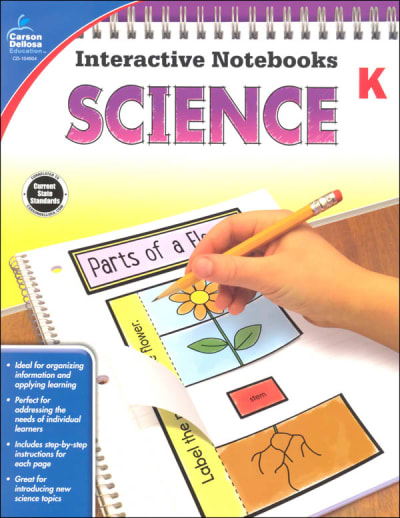Interactive Notebooks provide reinforcement of the concepts found in your science curriculum. These books of cut, paste, and color activities remind me of lapbooking, notebook journals, or even history and literature pockets (without the pockets, in some cases).
Each 96-page reproducible book is divided into branches of science - life science, physical science, and earth/space science. The front of the book offers a thorough explanation of how to use this book and how to plan for the interactive notebooks you would like to make. First, you need to choose the type of notebook. The publisher suggests a spiral notebook, compositions notebook, or binder with loose-leaf paper. I would also suggest that you might choose a spiral-bound art notebook, so the paper is a bit heavier. Make copies of the pages that you would like to incorporate into your child's notebook and follow the instructions for that page. If you want to create your own interactive notebook pages, using your own topics, there are blank templates at the back of the book.
There is an introduction for each topic that includes a hands-on activity that can be done with items around your house, and then you create your notebook page using the graphics from the book, and have the child complete some type of reflective activity. An example from the grade 1 book on the topic of "Forms of Energy" is: Introduction - Have the students make a shadow puppet, knock on the door, and rub hands together, explain that these are all forms of energy, and then explain the forms of energy; Creating the Notebook Page - Cut out the title from the copied page and glue it in their notebook. Cut out the three pockets that represent heat energy, sound energy, and light energy, color, and glue them in the notebook. Cut out the picture stripes that represent different types of energy. You can color them and then put them in the correct pocket in your notebook. Reflect on Learning – Have the child divide their page into 3 columns, cut out, and glue pictures from magazines representing light, heat, and sound energy.
You can do as many or as few of the pages from these books as you choose. You can work through the book sequentially or do the activities topically to complement your curriculum. If you don't want to make a whole notebook of science topics, and you only use this resource periodically, you could use colorful file folders to make individual ‘booklets' with your Interactive Science Notebooks pages. ~ Donna

